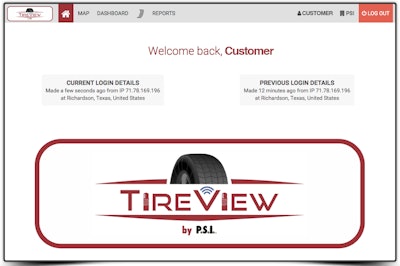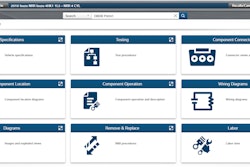
At launch, P.S.I. has partnered with three telematics integration partners – Road Ready by Truck-Lite, Phillips Connect, FleetLocate by Spireon – to collect data from the vehicles, and reduce telematics hardware, related fees, and typical platform sign-ins. Fleets can also use P.S.I.’s own telematics package.
“TireView LIVE is far more than a simple low-pressure alert. It provides the entire story,” said Jim Sharkey, P.S.I.’s vice president of global sales and marketing. “The next opportunity for fleets to save money is to deliver real-time data to the office, where they can make faster and better-informed decisions, and let the driver focus on driving.”
Tire data is relayed to the truck’s telematics system and sent to the TireView Live’s data analytics platform. That information is then displayed in a widget on the fleet’s telematics dashboard so fleet managers can monitor fleet tire health. Event types can be set individually or combined to generate a grid alert or email alerts to one or multiple recipients to optimize fleet management. They can also be sent via text messages to key people within an organization, such as various repair shops to generate work orders.
Sharkey said the new system is a major improvement for fleet’s tire management programs compared to traditional systems.
“White automatic tire inflation and tire pressure monitoring are great systems, most of that information was provided to the driver,” said Sharkey. “Automatic tire inflation kept trailer inflated until the driver could get it to the shop for repair, but it required the driver to tell the shop about the tire. Relying on drivers to report that information and take action can be ineffective.”










